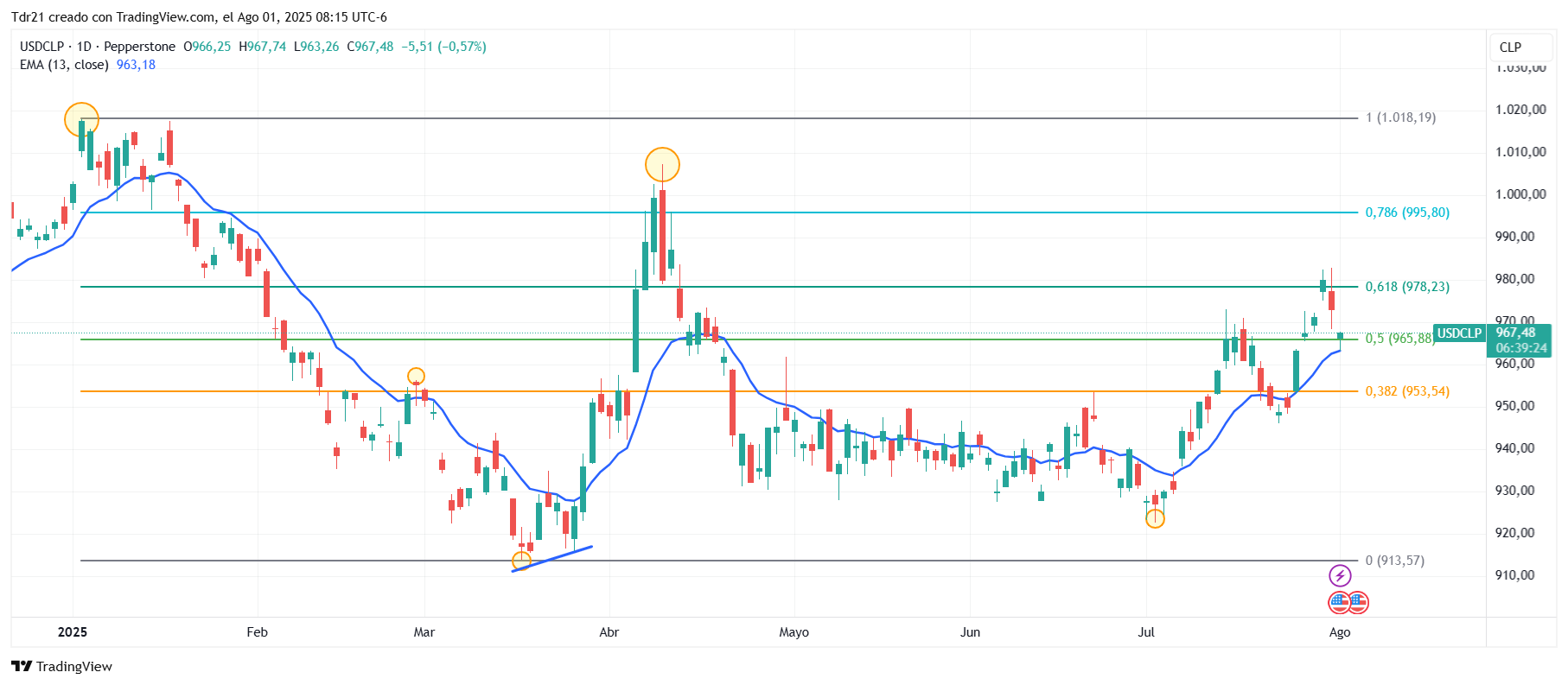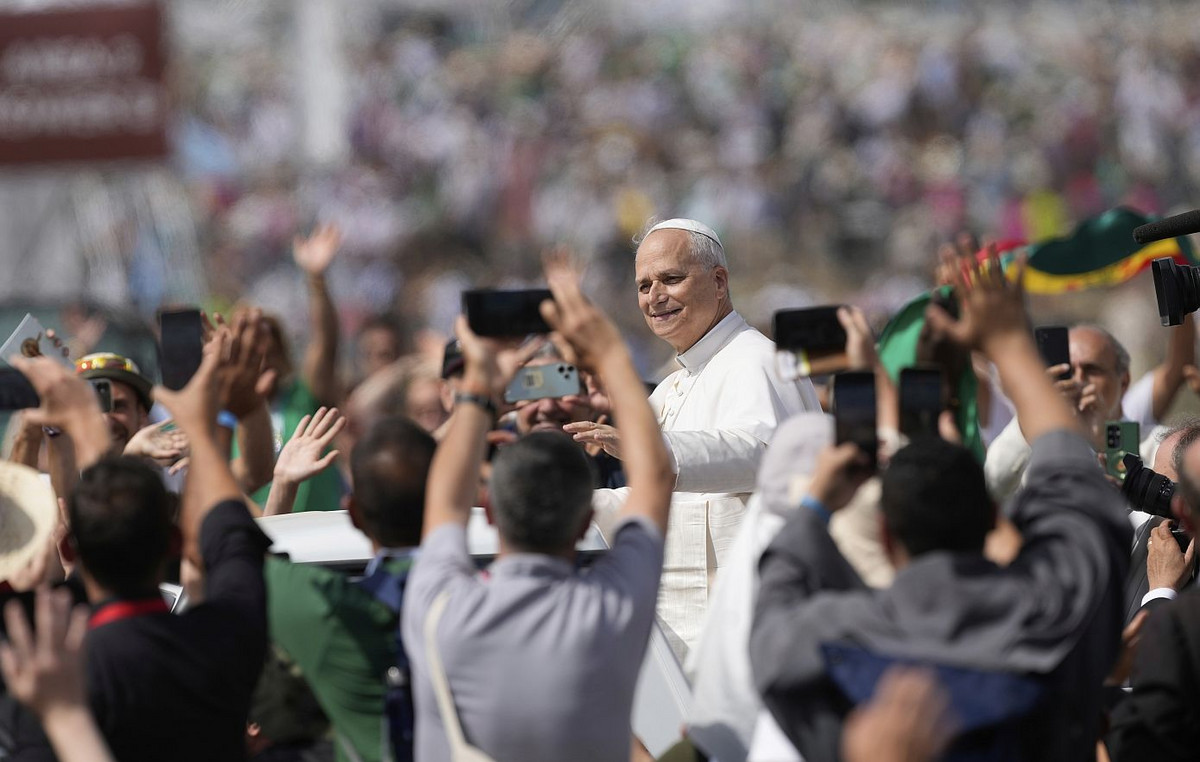- The US dollar goes back to the Chilean peso, reaching minimum of July 28 in 963.71.
- The dollar index (DXY) loses 1.13% daily, visiting minimums of July 30 at 98.84.
- The non -agricultural payrolls of the United States fell to 73 thousand in July, below the expectations of analysts.
- The monthly economic activity index of Chile (IMACEC) grew 3.1% in June, disappointing market projections.
The USD/CLP marked a daily maximum in 966.36, finding aggressive vendors that struggled the minimum parity of July 25 in 963.26. Currently, the USD/CLP slides 0.61% today, quoting at 967.11.
The Chilean weight extends its profits and reaches maximum one week
According to information presented by the United States Department of the Labor, non -agricultural payrolls were located in 73,000 in July, improving the 14,000 observed in June, although disappointing the 110,000 expected by the market.
On the other hand, the US unemployment rate increased slightly to 4.2% in July from 4.1% observed the previous month, complying with the estimates planned by analysts.
After this news, the dollar index (DXY) falls 1.13% on Friday, reaching minimum of July 30 at 98.72, ending with a streak of six consecutive sessions upwards.
In another front, the monthly economic activity index of Chile (IMACEC) disappointed the projections by rising 3.1% in June, below the estimated 3.9% and 3.2% registered in May. To this economic data is added an increase of 3.2% in industrial production in June, followed by the growth of 4.6% presented in May.
Similarly, the National Institute of Statistics of Chile announced on Wednesday that the unemployment rate was 8.9% in June, matching the figure of the previous period and below 9% estimated by consensus.
It should be noted that the Central Bank of Chile decided on Tuesday to cut interest rates at 25 basic points, from 5% to 4.75%, in line with market projections
In this context, the Chilean weight is listed up for the second consecutive day, while the USD/CLP goes back 0.61% daily, operating at the time of writing about 967.11.
Technical levels in the USD/CLP
The USD/CLP reacted down from a short -term resistance given by the maximum of July 31 in 982.78. Downwards, the closest support is located at 922.47, minimum of July 2. The following key support is observed in 913.82, Pivote Point of March 18.
USD/CLP daily graphics

US Dollar – Frequently Questions
The US dollar (USD) is the official currency of the United States of America, and the “de facto” currency of a significant number of other countries where it is in circulation along with local tickets. According to data from 2022, it is the most negotiated currency in the world, with more than 88% of all global currency change operations, which is equivalent to an average of 6.6 billion dollars in daily transactions. After World War II, the USD took over the pound sterling as a world reserve currency.
The most important individual factor that influences the value of the US dollar is monetary policy, which is determined by the Federal Reserve (FED). The Fed has two mandates: to achieve price stability (control inflation) and promote full employment. Its main tool to achieve these two objectives is to adjust interest rates. When prices rise too quickly and inflation exceeds the 2% objective set by the Fed, it rises the types, which favors the price of the dollar. When inflation falls below 2% or the unemployment rate is too high, the Fed can lower interest rates, which weighs on the dollar.
In extreme situations, the Federal Reserve can also print more dollars and promulgate quantitative flexibility (QE). The QE is the process by which the Fed substantially increases the flow of credit in a stuck financial system. It is an unconventional policy measure that is used when the credit has been exhausted because banks do not lend each other (for fear of the default of the counterparts). It is the last resort when it is unlikely that a simple decrease in interest rates will achieve the necessary result. It was the weapon chosen by the Fed to combat the contraction of the credit that occurred during the great financial crisis of 2008. It is that the Fed prints more dollars and uses them to buy bonds of the US government, mainly of financial institutions. Which usually leads to a weakening of the US dollar.
The quantitative hardening (QT) is the reverse process for which the Federal Reserve stops buying bonds from financial institutions and does not reinvote the capital of the wallet values that overcome in new purchases. It is usually positive for the US dollar.
Source: Fx Street
I am Joshua Winder, a senior-level journalist and editor at World Stock Market. I specialize in covering news related to the stock market and economic trends. With more than 8 years of experience in this field, I have become an expert in financial reporting.







